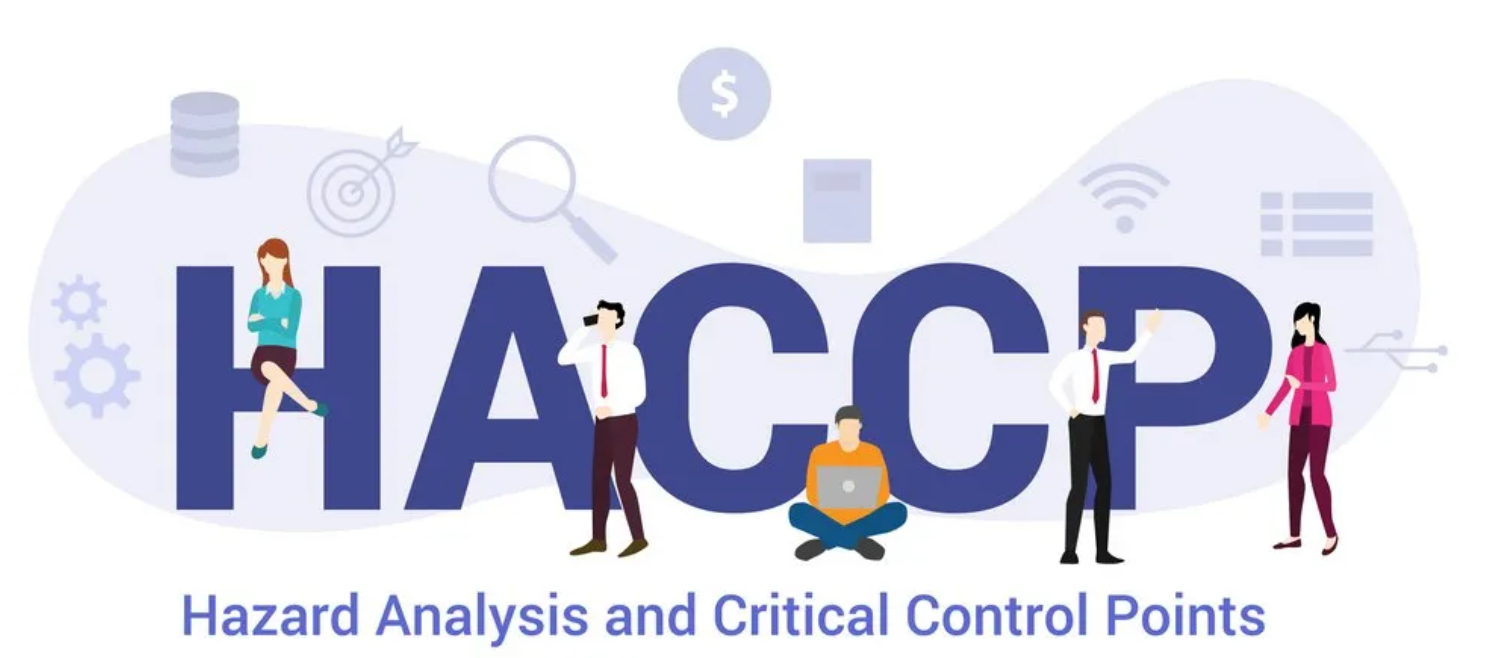Understanding HACCP
When it comes to understanding HACCP in the hospitality industry, food safety is of utmost importance. The health and well-being of guest depend on the quality and safety of the food they consume. This is where Hazard Analysis and Critical Control Points (HACCP) comes into play. In this article, we will explore what HACCP is and why it is crucial for ensuring food safety in the hospitality industry. We will also discuss the 7 principles of establishing the HACCP plan.
Understanding HACCP And It’s Meaning

By simply Understanding HACCP or hazard analysis and critical control points, know that is a systematic approach to food safety that identifies, evaluates, and controls hazards that may occur during food production and handling. It is a preventive system that focuses on identifying potential hazards and implementing measures to prevent their occurrence. The HACCP system is widely recognized and implemented by food businesses around the world. It helps to prevent foodborne illnesses by identifying and controlling hazards before they can cause harm. By following the HACCP principles, food producers can ensure the safety and quality of their products.
7 Principles of Establishing the HACCP plan.
Establishing a Hazard Analysis Critical Control Point (HACCP) plan is essential for ensuring food safety and preventing foodborne illnesses. This systematic approach helps food businesses identify and control potential hazards throughout the production process.
The 7 Principles of establishing the HACCP plan in order to ensure food safety are as below:
Conducting a hazard analysis
Conducting a hazard analysis is a crucial step in the HACCP system. It helps food businesses identify and prioritize potential hazards, allowing them to implement appropriate control measures to ensure the safety of their products. This process involves identifying and evaluating potential hazards that could occur at each stage of food production, from raw materials to the final product.
The first step in conducting a hazard analysis is to assemble a team of knowledgeable individuals who are familiar with the HACCP principles and the specific food production processes. This team should include representatives from different areas of the business, such as production, quality assurance, and food safety.
Next, the team should systematically evaluate each step in the production process to identify potential hazards. This can be done by conducting a thorough review of the process flow diagrams, ingredient lists, and equipment used in the production. During the hazard analysis, the team should consider various types of hazards, including biological, chemical, and physical hazards.
- Biological hazards can include pathogens such as bacteria, viruses, and parasites.
- Chemical hazards can include allergens, toxins, and contaminants.
- Physical hazards can include foreign objects like glass, metal, or plastic.
By understanding these hazards, businesses can implement appropriate control measures to prevent or reduce the likelihood of their occurrence. Once the hazards have been identified, the team should assess the severity and likelihood of each hazard occurring. This can be done using scientific data, historical records, and expert knowledge.
Identifying Critical Control Points (CCPs)
In Hazard Analysis and Critical Control Points (HACCP) systems, determining critical control points is a crucial step in ensuring food safety. CCPs are specific points in the production process where control measures can be applied to prevent, eliminate, or reduce hazards to an acceptable level.
The process of determining CCPs involves a systematic approach that includes conducting a hazard analysis, identifying potential hazards, and assessing their significance. Once hazards have been identified, the next step is to determine which control measures are necessary to prevent, eliminate, or reduce them.
There are several factors to consider when determining CCPs. These include the likelihood and severity of the hazard, the effectiveness of control measures, and the feasibility of implementing and monitoring the control measures. It is important to prioritize hazards based on their significance and focus on control measures that are most effective in reducing the risk.
Once CCPs have been determined, monitoring procedures should be established to ensure that control measures are implemented correctly and that hazards are effectively controlled. Monitoring may involve physical measurements, observations, or other methods to verify that control measures are working as intended.
Regular review and reassessment of CCPs is also necessary to ensure their continued effectiveness. As new information becomes available or production processes change, CCPs may need to be adjusted or additional control measures implemented.
By properly determining CCPs in HACCP systems, food businesses can effectively manage hazards and ensure the safety of their products. It is a critical step in maintaining food safety and preventing potential risks to consumers.
Establishing critical limits
Critical limits are the maximum or minimum values that must be met in order to prevent, eliminate, or reduce a hazard to an acceptable level. These limits help ensure that food safety hazards are controlled at the identified critical control points (CCPs) within a food production process.
Establishing critical limits involves determining the specific parameters that need to be monitored and controlled at each CCP. These parameters may include temperature, time, pH level, moisture content, or any other factor that is critical to preventing a food safety hazard.
When setting critical limits, it is important to consider scientific evidence, regulatory requirements, industry standards, and the characteristics of the specific food product. The critical limits should be based on objective criteria and should be measurable, achievable, and verifiable.
Once the critical limits have been established, they need to be clearly defined and documented. This includes specifying the numerical values or ranges that define the limits, as well as the units of measurement and the methods used for monitoring and verifying compliance.
Regular monitoring of critical limits is essential to ensure that the food safety hazards are being effectively controlled. Monitoring can be done through physical measurements, observations, or other appropriate methods. Any deviations from the critical limits should be immediately addressed and corrective actions should be taken to bring the process back under control.
Monitoring Critical Control Points (CCPs)
One of the key elements of HACCP is monitoring Critical Control Points (CCPs) to ensure that food safety measures are being effectively implemented.
CCPs are specific points in the production process where control measures can be applied to prevent, eliminate, or reduce a hazard to an acceptable level. These can include steps such as cooking, cooling, storage, and packaging.
Monitoring CCPs involves regularly checking and recording data to ensure that the control measures are working as intended. This can include temperature checks, visual inspections, and testing for pathogens or contaminants.
By monitoring CCPs, businesses can identify any deviations from the established critical limits and take corrective actions to prevent potential food safety issues. This helps to ensure that the final product is safe for consumption.
Implementing Corrective Actions
In any food safety management system, such as Hazard Analysis and Critical Control Points (HACCP), the implementation of corrective actions is essential to ensure the safety of the food being produced. Corrective actions are steps taken to address any deviations from the critical limits or failures to meet the established control measures.
When implementing corrective actions in HACCP, it is important to follow a systematic approach:
- Identify the deviation or failure: This involves identifying any non-conformances or deviations from the established critical limits or control measures.
- Investigate the root cause: Once the deviation is identified, it is crucial to investigate the root cause of the problem. This may involve conducting a thorough analysis of the process or conducting tests to determine the cause.
- Develop corrective actions: Based on the findings from the root cause analysis, appropriate corrective actions should be developed. These actions should be aimed at eliminating the root cause and preventing the recurrence of the deviation.
- Implement corrective actions: The developed corrective actions should be implemented promptly to address the deviation. This may involve making changes to the process, equipment, or training of personnel.
- Monitor and verify effectiveness: After implementing the corrective actions, it is important to monitor and verify their effectiveness. This may involve conducting tests or inspections to ensure that the deviation has been addressed and the control measures are back in place.
Implementing corrective actions in HACCP is crucial to maintain the integrity of the food safety management system. It helps to prevent the occurrence of food safety hazards and ensures the production of safe and high-quality food products.
Establishing Verification Procedures
Verification is the process of evaluating the HACCP system to determine if it is working as intended. It involves reviewing records, conducting audits, and performing tests to ensure that the system is being followed correctly and that the desired outcomes are being achieved.
There are several key steps involved in verifying the HACCP system:
- Reviewing documentation: This includes examining the HACCP plan, monitoring records, and corrective action reports to ensure that all necessary steps are being taken.
- Conducting internal audits: Regular internal audits help identify any gaps or non-compliance issues within the system. These audits should be conducted by trained personnel who are independent of the process being audited.
- Performing product testing: Testing the final product for hazards and contaminants is an essential part of verification. This can be done through laboratory analysis or on-site testing.
Verification is not a one-time event; it should be an ongoing process to ensure continuous improvement and compliance. Regularly reviewing and updating the HACCP plan, conducting training for employees, and staying up to date with regulatory requirements are all part of the verification process.
Documenting and record-keeping
Documenting and record-keeping are essential components of a successful HACCP program. They provide a detailed account of the steps taken to identify and control potential hazards in food production, processing, and handling. These documents serve as evidence that the necessary measures have been implemented and followed.
By documenting the critical control points (CCPs), monitoring procedures, corrective actions, and verification activities, food businesses can demonstrate their commitment to food safety. This documentation not only helps in complying with regulatory requirements but also serves as a valuable resource for training employees and improving processes.
Record-keeping plays a vital role in HACCP by providing a historical record of the entire food production process. This includes information about ingredients, equipment used, temperature logs, sanitation procedures, and any deviations from the established critical limits. These records allow for traceability and enable businesses to quickly identify and address any potential issues.
Accurate and complete documentation and record-keeping are particularly crucial during audits and inspections. Regulatory agencies and auditors rely on these records to assess the effectiveness of a company’s food safety management system. They help identify areas for improvement and ensure that the necessary corrective actions have been taken.
Understanding HACCP and following all the guidance and procedures is something that you should really know and understand if you working in the Food & Beverage industry or planning to do so in the future.
For a better visual understanding HACCP watch the video below:
Cover Image by: Apifirst.in



What a great article, well explained
This is a great blog. Thank you for the very informative post.
Thank you so much for giving such a useful information of HAACP
Your site provided us with valuable information to work
on. You have done a formidable job and our whole community will be grateful to you.